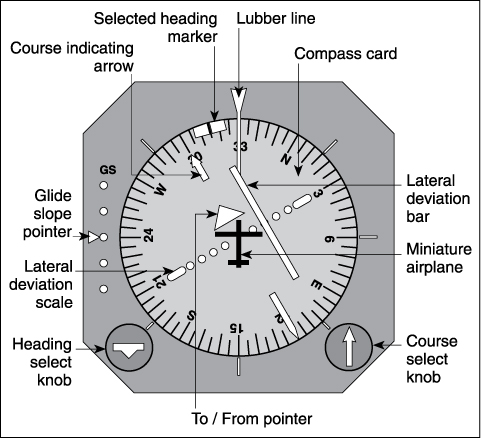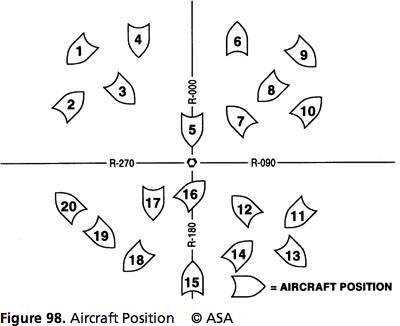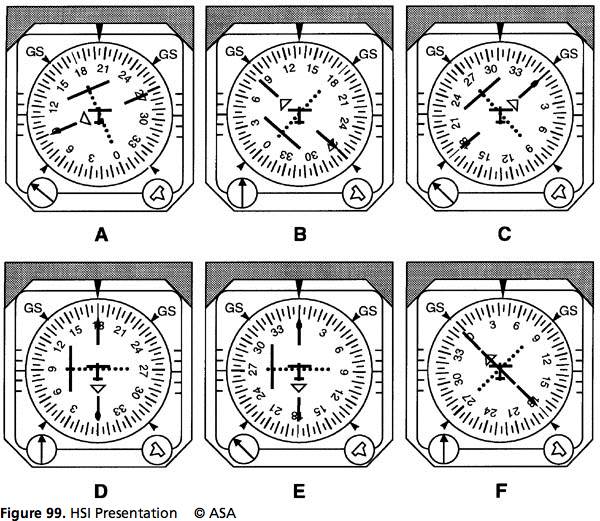Personally, one of my favorite instruments in an aircraft is the horizontal situation indicator or HSI for short. The HSI is a combination of two instruments: the heading indicator and the VOR. By bringing these two instruments together you are able to get a much clearer picture in a quicker amount of time. This instrument is particularly handy when flying on instruments or under an IFR flight plan. For me it just makes the job of flying much easier, but you first need to completely understand how to read and gather information from the HSI.

The aircraft heading displayed on the rotating azimuth card under the upper lubber line in the figure is 330°. The course indicating arrowhead that is shown is set to 300°. The tail of the course indicating arrow indicates the reciprocal, or 120°.
The course deviation bar operates with a VOR/LOC navigation receiver to indicate either left or right deviations from the course that is selected with the course indicating arrow. It moves left or right to indicate deviation from the centerline in the same manner that the angular movement of a conventional VOR/LOC needle indicates deviation from course.
The desired course is selected by rotating the course indicating arrow in relation to the azimuth card by means of the course set knob. This gives the pilot a pictorial presentation. The fixed aircraft symbol and the course deviation bar display the aircraft relative to the selected course as though the pilot was above the aircraft looking down.
The TO/FROM indicator is a triangular-shaped pointer. When this indicator points to the head of the course arrow, it indicates that the course selected, if properly intercepted and flown, will take the aircraft TO the selected facility, and vice versa.
The glide slope deviation pointer indicates the relationship of the aircraft to the glide slope. When the pointer is below the center position, the aircraft is above the glide slope, and an increased rate of descent is required.
To orient where the aircraft is in relation to the facility, first determine which radial is selected (look at the arrowhead). Next, determine whether the aircraft is flying to or away from the station (look at the TO/FROM indicator) to find which hemisphere the aircraft is in. Next, determine how far from the selected course the aircraft is (look at the deviation bar) to find which quadrant the aircraft is in. Finally, consider the aircraft heading (under the lubber line) to determine the aircraft’s position within the quadrant.
Think you got it? Try to answer these two knowledge test questions from the instrument knowledge exam to see if you understand how the HSI works.


1. (Refer to Figures 98 and 99.) To which aircraft position does HSI presentation ‘D’ correspond?
A—4
B—15
C—17
2. (Refer to Figures 98 and 99.) To which aircraft position does HSI presentation ‘A’ correspond?
A—1
B—8
C—11




